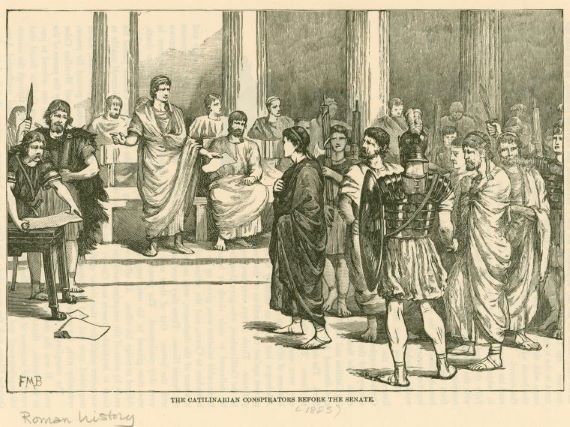Liberty Matters
Ancient and Modern Systems

Even by Thucydides’ account, Athenian democracy worked fairly well until it fell victim to the stresses of the Peloponnesian War. But Thucydides considered the stresses of war an enduring fact of life that systems of government must be designed to withstand.
Thucydides had a personal as well as an ideological ax to grind with Cleon. It was Cleon who led the successful effort to ostracize him after he failed to defend Amphipolis from the Spartans. By that time, ostracism had become a means of punishing failure rather than a method of disarming the powerful as originally intended. The practice soon degenerated even further into a way of harassing the unpopular, at which point it was abolished.
It was understandable that the Greek historian Polybius employed the theory of a revered Greek philosopher to explain to his dazed and defeated compatriots how a group of barbarians from a small town in the West had managed to conquer “almost the whole of the inhabited world” (just as it was understandable that Livy, when seeking to explain the same phenomenon to his fellow Romans, claimed cultural superiority). But the Roman republic’s status as a mixed government is debatable. Even at the height of their power, the consuls and the popular assemblies failed to serve as effective counterweights to the aristocratic Senate. Indeed, at the very time that Polybius was portraying the republic as the ancient world’s most successful mixed government, the wealth and power produced by rapid Roman expansion across the Mediterranean was tilting the balance of power even further in favor of the aristocrats, thereby bringing about the class conflict that played a crucial role in the downfall of the republic.
The Federalist authors selected their collective pseudonym “Publicola” as part of an effort to dispel the Antifederalist claim that the new constitution they favored would institute a monarchy. The framers of the Articles of Confederation, the nation’s first constitution, had declined to establish a single executive due to the widespread fear of monarchy engendered by George III (under the Articles, executive functions were performed by a congressional committee). By contrast, the framers of the proposed new constitution took the bold step of creating a fairly powerful executive, thereby reviving fears of monarchy.
Both the British monarch and the House of Lords have been divested of so much of their former power that they have become largely ceremonial institutions. Thus, the British system of government today more closely resembles a simple democracy than any form of mixed government. The majority exerts its will directly through a virtually unchecked House of Commons, in which the nation’s chief executive serves as a member. The modern British system is similar to the unicameral democracy championed by Thomas Paine, Nicolas de Condorcet, and other eighteenth-century radicals.
By contrast, the United States remains a democratic republic, a nation in which the majority wields most of the power but in which a few significant elements of mixture, combined with the separation of powers, provide obstacles to majority tyranny. The composition of the Senate, in which small states possess equality with large ones, and of the Electoral College, in which small states have slightly more weight than they do in the population count, ensure that majorities do not rule completely. A powerful executive, holding a mandate from the people separate from that of Congress, possesses the veto power over its bills. Finally, judicial review by unelected, life-tenured judges provides yet another element capable of thwarting majority opinion.
Copyright and Fair Use Statement
“Liberty Matters” is the copyright of Liberty Fund, Inc. This material is put on line to further the educational goals of Liberty Fund, Inc. These essays and responses may be quoted and otherwise used under “fair use” provisions for educational and academic purposes. To reprint these essays in course booklets requires the prior permission of Liberty Fund, Inc. Please contact oll@libertyfund.org if you have any questions.